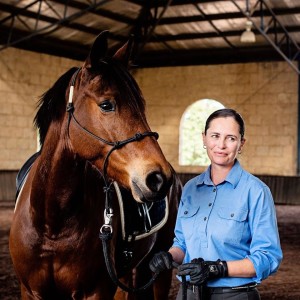 Editor’s Note: We welcome Shelley Appleton as a guest columnist for BestHorsePractices. Her articles are part of a body of work dedicated to horsemanship knowledge and self-improvement called: Learning to Connect.
Editor’s Note: We welcome Shelley Appleton as a guest columnist for BestHorsePractices. Her articles are part of a body of work dedicated to horsemanship knowledge and self-improvement called: Learning to Connect.
Appleton is a lecturer at the School of Pharmacy at Curtin University in Bentley, Australia, a dressage rider, and horse training coach.
After reading and watching Evidence-Based Horsemanship (EBH), a book and DVD by Dr. Steve Peters and Martin Black, and working with horseman Warwick Schiller, she made a “massive conceptual leap” which synthesized her horsemanship with her grasp of the science.
She said EBH “made a massive impact on my understanding of horses and all the aspects to consider when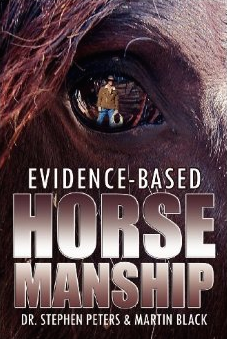 training them.”
training them.”
“I consider myself extremely fortunate to have practical expertise handling horses and have
this multidimensional understanding of horse behavior, learning, and neurology that all underpin my horsemanship decisions. I describe myself as a practical skills horse trainer who has been refined by science.”
This year, she will be a guest lecturer in the Horse Physiology and Behavior unit at Murdoch University.
“My focus is on human learning and how to make decisions when
working with horses. So much horsemanship focuses on the horse’s ‘problems’ or its ‘training’ when really the deciding factor is who is hanging onto its lead rope or sitting in the saddle.
“My favorite saying is from Buck Brannaman: ‘a horse is mirror to your soul.’ For me, the horse is a reflection of a person’s knowledge and skills and their overall understanding of horses and how to work with them.
Sign up for our free weekly newsletter!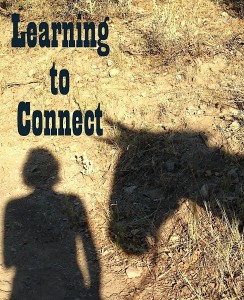
By Shelley Appleton
Legendary horseman Ray Hunt famously used to sign his autograph with the word “Think.” When you work a horse, you need to be using your intellect and not engaging your emotions. Why? Because you need your intellect to observe, analyze, and evaluate the horse. You need it to problem solve, judge your own performance, and make decisions during the training process.
Horses are emotional creatures and their behavior is a reflection of how they feel. Read what’s meant by “emotional,” the Autonomic Nervous System. Human thoughts and actions are shaped by both our emotions and our ability to think and reason.
Aristotle labeled us the “rational animal” as our brain has the ability to perform complex reasoning. We are able to do this because our brain has both an emotional and intellectual system to assist our survival. Our emotion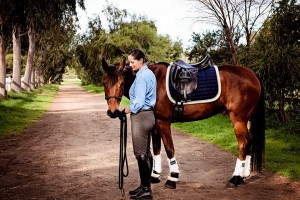 al and intellectual systems are connected and every thought and action is a product of varying input from both systems. When we work with horses, we succeed when our thoughts and actions are principally influenced by our intellect and not our emotions. This is easier said than done because our emotional system is involuntary and fast. Our intellectual system is evolutionarily newer, slower, and relatively voluntary. It takes more mental energy to utilize our intellect than our emotional system. When we are under pressure we also tend to default to our emotional system.
al and intellectual systems are connected and every thought and action is a product of varying input from both systems. When we work with horses, we succeed when our thoughts and actions are principally influenced by our intellect and not our emotions. This is easier said than done because our emotional system is involuntary and fast. Our intellectual system is evolutionarily newer, slower, and relatively voluntary. It takes more mental energy to utilize our intellect than our emotional system. When we are under pressure we also tend to default to our emotional system.
When you are working with a horse and feel fear, anger, or frustration it means your emotional system has perceived a threat to your safety, an unexpected outcome, or failure to achieve a goal. Working a horse with your emotional system dominating your thoughts and driving your actions leads to poor results. It clouds your training judgments and impedes your ability to apply consistent and predictable pressure. It also worries a horse as its keen ability to read body language means that it can identify your emotional state and respond to it.
Marcus Aurelius said: “You have power over your mind, not outside events. Realize this and you will find strength.”
Not that long ago, I was not aware that the origin of my thoughts had any impact on my horse work. I remember feeling very frustrated with my horse yet having little insight on how I was impacting him.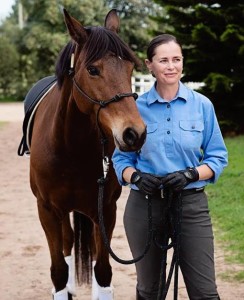
These days, I am conscious to keep my emotions in check. I focus on the task at hand and focus on observing, analyzing and evaluating the horse. I am conscious of the neutral presentation of my cues and application of pressure. If I start to feel emotions such as frustration, then I am careful to stop, reevaluate my approach, and start again.
One thing I find useful:
To check myself every time I rub on a horse. If I am emotionally driven, I tend to rub fast. I know to slow myself down and re-focus my thoughts on thinking rather than feeling.
I’ve also re-adjusted my values, beliefs, and goals by learning about horses’ natural behaviors, the way they learn, and strategies for working with them. My expectations have become far more realistic as a result.
Plato says: “Human behavior flows from three main sources – desire, emotion and knowledge.” With horse training, we need to make sure that our actions always stem from knowledge. Let your desire fuel your acquisition of knowledge and skills, control your thinking, keep your emotions in check, and improve your horse training.
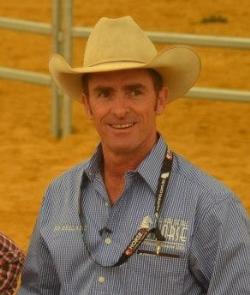
Great work Shelley , I wish everyone could understand this.
Great article. Thank you for sharing.
Great article. Love the insights into how our emotions are connected to our work and time with horses. I agree that horses are simply reflecting back to us how we are showing up, not just in the round pen but in life, in our relationships.
It’s all about the horse; but it’s not all about the horse. It’s also about what you are bringing to the horse, and how the horse is receiving it. I love that every interaction with a horse is an opportunity to expand myself, my awareness, my focus, my attention. We humans tend to live in a bubble of which we are the center. My life is much richer when that bubble expands to include a horse.